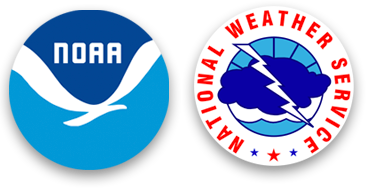The World Weather Building - National Weather Service Heritage
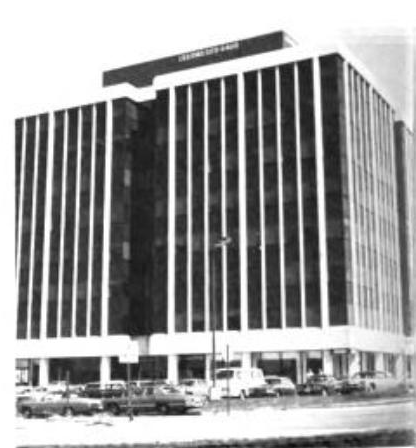
The World Weather Building
By NWS Heritage Projects TeamThe following is adapted from an article in the the January 1975 edition of NOAA Magazine, originally written by Edwin P. Weigel.
When NOAA's new World Weather Building was dedicated last October 22, Administrator Robert M. White told an auditorium field with guests that this was a moment of great satisfaction, the culmination of years of dreams and planning.
The new building, an ultramodern eight-story structure on the southeast outskirts of the nation's capital, draws together in one compact unit a number of NOAA's most important weather-observing and forecasting functions. It concentrates in one place an array of talent and instruments of unparalleled sophistication for the processing of weather data.
Among new occupants at 5200 Old Auth Road, Camp Springs, Md., are the National Weather Service's National Meteorological Center and the Washington D.C. Forecast Office, and the National Environmental Satellite Service's elaborate new facility for processing photos from an improved series of geostationary weather satellites now coming into use.
With tenants such as these, the building is thus the operating nerve center for weather information for all of the United States and much of the rest of the world.
The National Meteorological Center projects weather trends on a global and national basis as guidance for regional and local forecasters in preparing more-detailed weather predictions for their areas. All of the Center's employees except those in computer communications are assigned to the new building from previous quarters at Federal Office Building 4, Suitland, Md. NMC's giant computers are too large to be moved. Their output will be transmitted two miles electronically to the World Weather Building with no loss in efficiency.
The new quarters assigned to some 260 employees of the National Meteorological Center are on the second, third, fourth, and sixth floors of the World Weather Building. NMC shares the third floor with the Washington Weather Service Forecast Office and the sixth with the National Environmental Satellite Service (NESS). NESS occupies all of the fifth and seventh floors, as well. Other NOAA occupants include members of the Weather Service's Spaceflight Meteorology Group.
Only the first and eighth floors of the rented building are occupied by other than NOAA tenants.
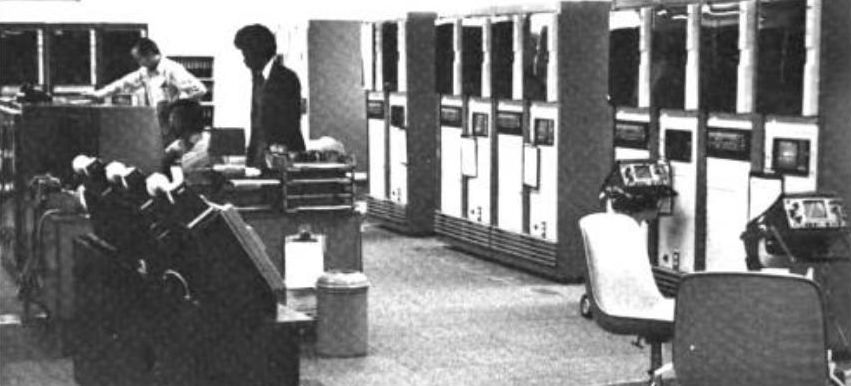
for localized use. Photo from NOAA Magazine.
Showpiece of the World Weather Building is the new NESS satellite data-processing facility, and much of the architecture was designed to accommodate this unit. Here, visitors see a dazzling array of new equipment for automatically processing and distributing photographs made by new, operational geostationary satellites. The first of these was launched last May and is now beaming back a steady stream of full-disk photos of the Earth from a spot 22,300 miles (35,680 kilometers) high over equatorial Latin America. The photos arrive every 30 minutes, night and day, and are sectorized (divided into smaller geographical areas) to provide more detailed information on cloud cover, temperatures, and high-level winds for a large number of localities in North and South America.
The satellite now providing such photographs was funded by the National Aeronautics and Space Administration and is designated SMS-1 (for Synchronous Meteorological Satellite No. 1). A second such NASA satellite, SMS-2, will be stationed over the Pacific. Later satellites in the series, funded by NOAA, will be called GOES, for Geostationary Operational Environmental Satellite. The first GOES satellite is now being built; there are contracts for two more.
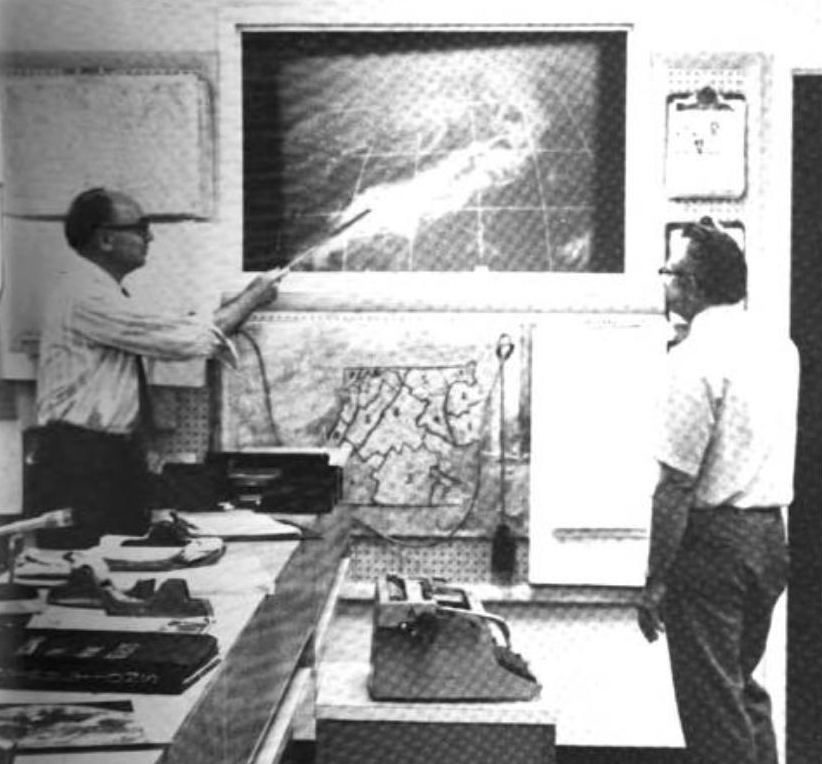
Forecast Office. Photo from NOAA Magazine.
Among the advantages these new satellites have over earlier geostationary satellites such as NASA's ATS-1 and ATS-3 are the ability to provide photographs of unprecedented resolution in daytime (as fine as one-half mile) and to provide photographs at night by infrared or heat-sensitive photography.
A globe-girdling system of five such satellites is planned, according to the World Meteorological Organization. Three similar geostationary satellites are to be placed at selected spots over the Equator by Europe, Japan and the Soviet Union. These, coupled with the United States' satellites, will provide, for the first time, day-and-night photographs of the entire Earth except extreme Polar regions on a near continuous basis. The plan calls for the European Space Research Organization (ERSO) to position one at the Greenwich Meridian or zero degrees longitude; for Japan to place one at about 140 degrees east, looking down on New Guinea, and the USSR one about 60 degrees east, over the Indian Ocean. Photos and data are to be shared.
Thus the GOES Central Data Distribution System at the World Weather Building is a pioneer facility in a weather-observation program aimed at benefitting all mankind. It was appropriate that guests and the dedication ceremonies last October included Mr. M.F. Taha, head of the Egyptian meteorological service and president of the World Meteorological Organization, and Dr. D.A. Davies, Secretary-General of the WMO.
At the third-floor offices of the Weather Service Forecast Office for Washington, D.C. and Vicinity, Meteorologist-in-Charge Jerrold A. La Rue said the new quarters have been responsible for a tremendous boost in morale on his staff.
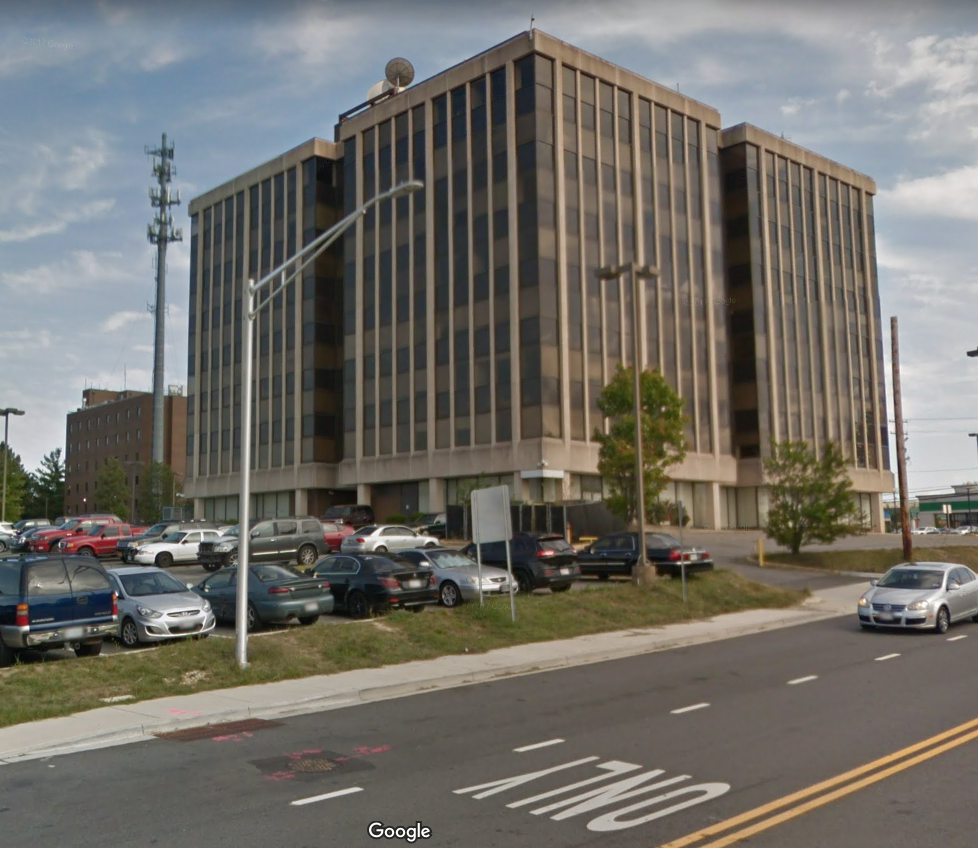
Image from Google Street View.
"We didn't acquire a lot of exotic new equipment by coming here; nor are we changing our mode of operations in any significant way. But there is a big difference in the way people feel about this place. From quarters that were noisy, crowded, dingy and drab, we have been transplanted to a setting that is quiet, spacious, clean and attractive. Before, our people were not proud of where they worked. Now they are. Just about everybody has brought his family out to see this place. They're happy now. And that's important."
